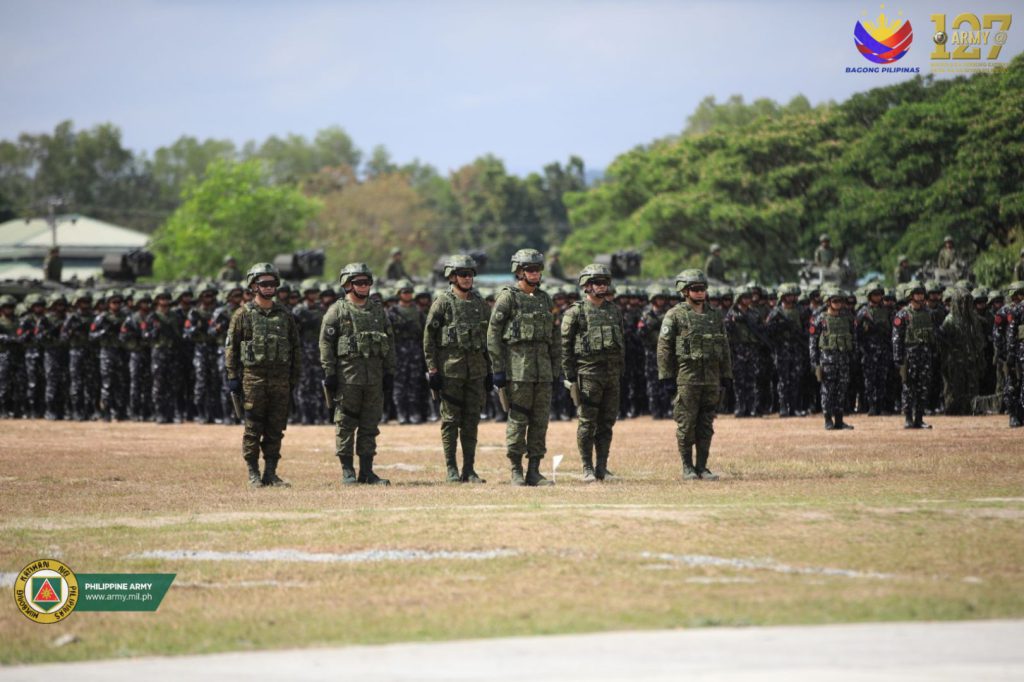Boots on the ground in the Philippines

The Philippine Army showcased their skills during the culmination of Exercise Katihan at Makabulos Grandstand, Training and Doctrine Command at Camp O’Donnell, Tapas, Tarlac, on March 22, 2024. Photo from Philippine Army
By Manuel Mogato | Date 04-06-2024
MANILA — The United States military has started to deploy, on a rotation basis, an unspecified number of ground troops in northern Luzon as part of its new military strategy to counter China’s creeping influence in the Indo-Pacific region.
According to an Army colonel, who declined to be named because he was authorized to speak to the press, a small contingent of US Army engineers was also sent to the Philippines to complete 23 construction projects in seven military bases it was allowed access under the Enhanced Defense Cooperation Agreement (EDCA).
He added that the construction projects will be done at five existing EDCA sites and two new locations in northern Luzon.
The US has allocated nearly $110 million to build barracks, warehouses, oil and water depots, hangars, airfields, and secure ports in the seven EDCA sites.
The Army colonel said the US ground forces would also be involved in a series of bilateral military exercises in the Philippines, which has increased to about 500 activities this year.
“Rotating troops to take part in exercises and cross-training in many parts of the Indo-Pacific region would give US forces more flexibility and agility in responding to potential crises and conflicts,” the Army colonel, explaining the new US military strategy to distribute its forces across its area of responsibility from the Pacific Ocean to the Indian Ocean.
He said the US was moving away from stationing troops, aircraft, and warships in large bases in Japan and South Korea and was scattering them across the Indo-Pacific region.
“US forces, including the Army and Marines, have been moving around constantly in several exercises with allies and partners as part of the new strategy,” he added.
Apart from rotating and moving around troops and equipment, the Army colonel said the US is also building a network of logistics hubs across the region to sustain and rapidly respond to any contingency in the area.
“The EDCA locations are primarily for equipment and supplies for humanitarian assistance and disaster relief (HADR) and security operations,” the Army colonel said.
He said the government would allow the US to deploy offensive weapons in the EDCA, like medium-range ballistic missiles that could target any other country.
However, defensive weapons would be allowed to protect and defend EDCA sites and other critical infrastructures, like radar sites, airfields, and ports.
The Army colonel said the United States INDOPACOM has created four defense clusters where troops, aircraft, vessels, and other equipment would be deployed in its area of operations: Australia, Guam, Japan, and the Philippines.
The Philippines was part of the four clusters because it’s near two of the region’s flashpoints – Taiwan and the South China Sea.
The evolving security situation in the South China Sea was among the issues to be addressed at the first-ever triangular summit in Washington next week among Japan, the Philippines, and the United States.
The Army colonel said the US has been increasingly concerned with China’s military build-up and “gray-zone tactics” to change the status quo in the region.
